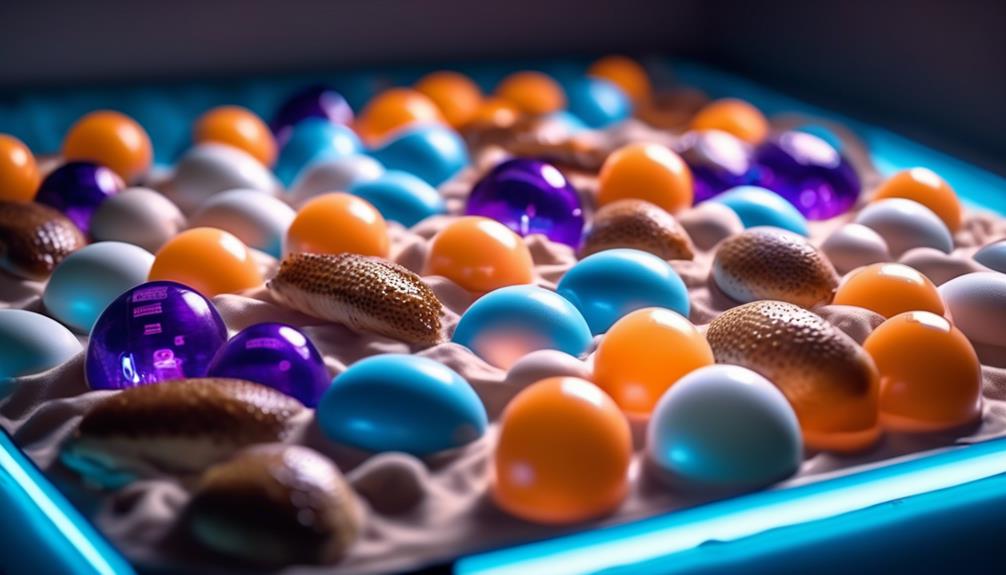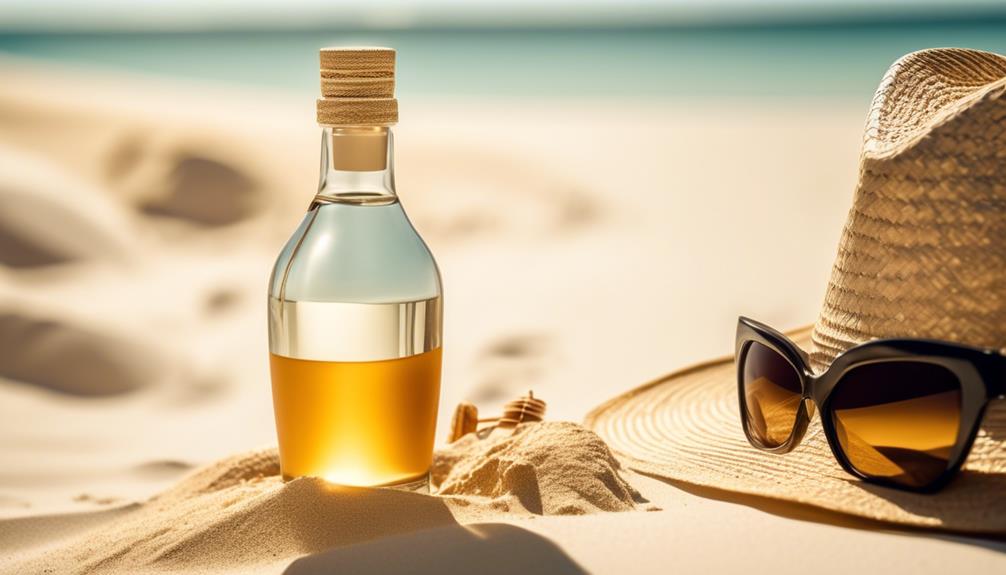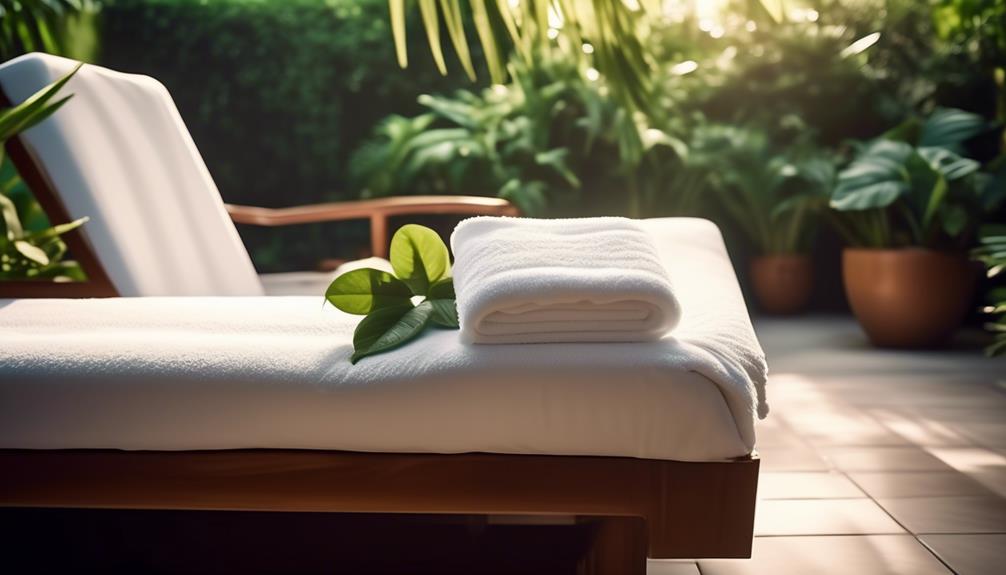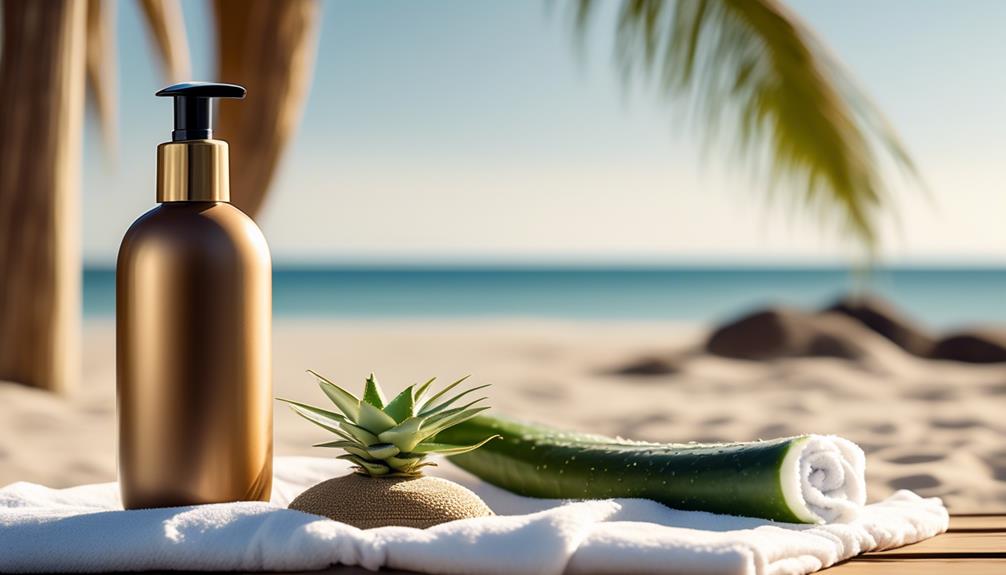Indoor tanning beds mimic the sun’s warmth, helping your body produce vitamin D. They are gaining popularity as a convenient alternative to sun exposure.
But you’re smart; you know there’s a thin line between a healthy glow and a risky burn. So, why would you consider tanning beds as a go-to for your vitamin D fix? Well, they’re not only about achieving that sun-kissed look—they can be a practical solution in our busy lives for maintaining adequate vitamin D levels, especially when the winter blues hit.
Now, you might be wondering if it’s safe, or even worth it, considering the mixed opinions out there. Stick around, as we’re about to peel back the layers on this sunlit controversy, with the aim to keep you informed and your health in check.
Key Takeaways
- Tanning beds provide controlled UV radiation, making them a convenient way to maintain vitamin D levels during winter.
- UVB rays in tanning beds stimulate the production of Vitamin D, which is crucial for a healthy immune system and overall health.
- Tanning bed sessions can be personalized based on individual preferences, allowing for optimal exposure time for vitamin D synthesis.
- While tanning beds offer benefits for vitamin D levels, it is important to follow safe tanning practices and be aware of the risks of overexposure, including an increased risk of skin cancer.
Understanding UV Exposure
Understanding UV exposure is key to safely harnessing the power of sunbeds for your Vitamin D fix.
You’re not alone in craving that sun-kissed glow, but more than a pretty tan, it’s about feeling vital and alive, right? Soaking up UVB light in moderation can be your secret weapon for Vitamin D synthesis. This is no fluffy wellness trend; it’s the real deal for strong bones and a robust immune system.
But here’s the emotional tug: with sunbeds comes a delicate balance. Too little, and you’re missing out on the goodness; too much, and you risk overexposure to UVB rays. It’s like a dance with the sun, where you need to hit the rhythm just right.
That golden hour isn’t just outdoors—it’s right there in the sunbed, where UV radiation meets your skin in a controlled embrace.
Tanning Beds Mechanism
Tanning bed is meticulously engineered to mimic the sun’s rays for your Vitamin D boost. It’s like you’re cradling the sun’s warmth, but with a trendy, modern twist. The machines are designed to emit UVA and UVB rays, the dynamic duo essential for Vitamin D production. UVB rays play the leading role, teasing your skin into making Vitamin D, the sunshine vitamin that’s got everyone buzzing.
When you’re nestled in the cocoon of an Indoor Tanning bed, you’re not just basking in warmth; you’re kickstarting a natural process. The bulbs above and below are your besties here, showering you with just the right balance of UV light. It’s the UVB that nudges your skin, whispering, ‘let’s make some Vitamin D today.’ And your skin listens, it really does.
You’re in control, too. You decide how long you’re immersed in this Vitamin D haven, fine-tuning your experience. It’s intimate, it’s personal, and it’s all about giving your body that sun-kissed nudge towards health. Indoor Tanning isn’t just about that glow; it’s about feeling radiant inside out.
Benefits of Vitamin D
Why settle for just strong bones when Vitamin D’s powers can be a game-changer for your overall health? You’re in the know; you’ve heard the buzz about how this sunshine vitamin can uplift every bit of you, from the inside out.
It’s not just about sipping on fortified milk or popping a vitamin D supplementation like it’s a casual thing.
Those rays that produce vitamin D are like a warm hug for your healthy immune system. And in the dreary UK winters, when the sun plays hard to get, you need that embrace more than ever. Tanning beds aren’t just for that glow; they’re your secret weapon to keep the vitamin D flowing.
Sure, you’ve got to play it smart. No one’s saying to overdo it. But with a little bit of that UVB magic, in moderation, you’re hitting the sweet spot. You’re not just investing in your bones; you’re potentially warding off the big baddies like cancer and chronic diseases.
Tanning Bed Vitamin D Link
When natural sunshine is scarce, or you’re struggling with vitamin D deficiency, tanning beds might just be your secret ally. It’s like capturing a bit of the sun’s glow, wrapping it around you to raise your vitamin D levels and brighten your mood.
Let’s break it down, shall we? Here’s why you might want to consider tanning beds as your go-to vitamin D booster:
- Targeted Exposure: Tanning beds offer direct UV radiation, which is key to vitamin D synthesis.
- Controlled Sessions: You can manage your exposure time to minimize risks while maximizing benefits.
- Year-Round Access: No need to wait for sunny days; get your vitamin D dose on demand.
- Beat the Blues: If winter’s got you down, a little tanning bed time can lift your spirits and your vitamin D stats.
Safe Tanning Practices
You know the glow’s the trend, but let’s keep it real and safe, okay? Stick to the UV exposure guidelines and always gear up with the right protective measures — your skin will thank you.
UV Exposure Guidelines
Navigating the risks and rewards of UV exposure, it’s crucial to embrace safe tanning habits to safeguard your skin while soaking up that vitamin D. You’re seeking that sun-kissed glow, but remember, it’s all about balance and protection.
- Limit your sessions with UV-emitting tanning devices to follow UV exposure guidelines.
- Mix it up by alternating tanning bed use with other vitamin D sources.
- Always wear protective eyewear; your eyes are just as precious as your skin.
- Understand the difference between UVA and UVB rays to choose products that protect against both.
You’re not just tanning; you’re nurturing your body. So, let’s keep it real and safe; your skin will thank you for it.
Protective Measures Needed
The warmth of UV rays may feel like a cozy blanket, but the effects of artificial sunshine can be a double-edged sword. You’re playing with fire; UV-emitting tanning devices significantly increase the risk of developing skin issues if you don’t take protective measures seriously.
Be trend-savvy and skin-smart; don’t bask too long under those glowing bulbs. The Vitamin D boost stays with you for weeks, so there’s no need to overdo it. And , let’s keep it real, supplements can’t always compete with the sun-kissed radiance from a session—but moderation is your skin’s bestie.
Stay golden, but stay safe.
Selecting the Right Bronzer
You’ve got to match the bronzer to your skin type to ace that sun-kissed look without the ouch.
We’ll break down the bronzer types and show you how to apply them like a pro—no mess, no stress!
Bronzer Types Explained
Tanning beds can enhance your Vitamin D and give you that desired warmth, but the right bronzer makes all the difference.
- Natural Bronzers: Ideal for beginners, these enhance your skin tone gradually.
- Tingle Bronzers: For the daring, these increase blood flow, intensifying your tan under UVA light.
- Delayed Bronzers: They develop hours later, deepening your tan as you dream.
- Instant Bronzers: Perfect for that quick, trendy glow-up before a night out.
Skin Type Matching
Selecting the perfect bronzer is all about syncing it to your unique skin type and tone, ensuring you rock a natural, sun-kissed look that turns heads.
If your skin directly mirrors the soft glow of fair hues, embrace light, peachy bronzers for that subtle radiance.
Medium skin mavens, bask in warm, golden shades that speak your language of allure.
And for those with deep skin tones, indulge in rich, terracotta undertones that hug your curves of complexion.
Application Techniques Simplified
As you master the art of skin type matching, let’s simplify the bronzer application techniques to elevate your sun-inspired look with flawless precision.
While tanning beds are a cozy retreat to raise levels of vitamin D, selecting the right bronzer can enhance that radiant vibe.
- Match your bronzer to your skin tone – it’s like finding a soulmate for your complexion.
- Consider your skin’s undertone – warm, cool, or neutral, it’s the secret to that natural-looking charm.
- Matte for contour, shimmer for glow – whether you’re sculpting or shining, there’s a finish for your every mood.
- Test on the jawline – because swatching is the ultimate move for that perfect match.
Get ready to glow with confidence as you boost your Vitamin D and rock that tan!
Session Duration for Vitamin D
You’re not just seeking that warm, sun-kissed glow; you’re in it for the wellness perks, too. Think about it – a few minutes basking in the light, and you’re on your way to a Vitamin D boost that has you feeling like you’ve just hugged the sun.
The key is to nail that session duration. We’re talking about a cozy 5-10 minutes that could work wonders for your Vitamin D intake, tailored just for you. It’s like your personal Vitamin D sweet spot, right? Remember, longer isn’t always better; it’s about finding that perfect time frame where you balance the benefits with taking care of your precious skin.
Regular, short visits to your tanning haven may just be your ticket to a radiant, Vitamin D-rich you. Keep it consistent, keep it brief, and watch the magic happen.
Risks of Overexposure
You’re playing with fire if you think tanning beds are a safe bet for your vitamin D fix. Not only can overdoing it crank up your skin cancer risk, but it’s also a fast track to looking way older than your years, not to mention the scary possibility of frying your eyes.
Keep it cool, and let’s chat about why catching those rays could cost you more than a golden glow.
Skin Cancer Concerns
You’re playing with fire when you opt for that artificial glow, as tanning beds pack a carcinogenic punch that significantly ups your skin cancer risk. The Skin Cancer Foundation has sounded the alarm, and it’s time to listen up:
- Ultraviolet Radiation: Just like the sun, tanning beds emit UV rays that damage your skin.
- Risk of Skin Cancer: Using tanning beds, especially before you hit 30, skyrockets your chances of skin trouble.
- Cancer’s Top Tier: These aren’t your average risks; tanning beds are grouped with the heavy hitters like plutonium.
- Melanoma: It’s not just a scare tactic; this can be deadly serious.
Premature Aging Effects
Chasing a sun-kissed look with tanning beds doesn’t just boost your skin cancer risk—it also fast-tracks you to premature wrinkles and sagging skin. Honestly, it’s heartbreaking to see that desire for a glow turn into a battle with skin damage.
Those UV-emitting tanning devices might give you that short-term bronzed vibe, but they’re betraying your skin’s youthfulness. The premature aging effects are no joke—you’re signing up for fine lines and a loss of elasticity that no filter can hide.
You’re gorgeous as you are, and risking your skin’s health for a temporary tan just isn’t worth it. There are safer ways to get that vitamin D and keep your skin radiant and resilient. Choose wisely, love your skin.
Eye Damage Potential
When you’re soaking up those UV rays for a tan, your eyes are silently suffering, risking serious damage from cataracts to macular degeneration. You mightn’t feel it now, but your peepers are on the frontline, exposed to intense radiation that can have lasting effects.
Here’s the real talk on why you need to protect your eyes in tanning beds:
- UV-emitting tanning devices don’t just bronze your skin; they can cook up a storm of trouble for your sight.
- Overexposure could lead to eye damage potential so serious, you might miss seeing future trends unfold.
- Forgetting those goggles? You’re gambling with discomfort, redness, and possibly long-term harm.
- Lasting eye conditions are no joke; they can sneak up on you, turning your vision journey into a bumpy ride.
Enhancing Tanning Results
To maximize your glow, it’s essential to understand that achieving the perfect tan through sunbeds isn’t just about hopping in and hoping for the best. You’re seeking that sun-kissed radiance, and you should know that enhancing tanning results is all about the love you give your skin and the strategies you employ.
Let’s get into the details. Here’s a cheat sheet to elevate your tanning game to the next level:
| Prep Work | During Session | Post-Care |
|---|---|---|
| Exfoliate | Use goggles | Moisturize |
| Hydrate | Time wisely | Cool shower |
| No makeup | Consistency | No exfoliating |
| Balanced diet | Relax | Hydrate again |
| Mindset | Listen to your skin | Extend care |
When you’re cozying up in those UV-emitting tanning devices, you’re not just basking in warmth; you’re also absorbing that oh-so-vital Vitamin D. But remember, your skin’s health is priceless. It’s about finding that sweet spot where you enhance your tan without overdoing it.
Tanning beds can be your little secret to maintaining that Vitamin D and glow, especially when the sun plays hard to get. But don’t forget, it’s a dance with the sun’s synthetic cousin, and you’ve got to know the moves to do it right. Stay golden and safe, love!
Aftercare and Skin Health
Nurturing your skin after a tanning session is key to keeping that glow while safeguarding your health. You know the warmth of the sun-kissed look you crave, but it’s crucial to love on your skin just as much after you step out of the tanning bed. Aftercare and skin health aren’t just buzzwords; they’re your ticket to maintaining that stunning radiance without putting your skin at risk.
Let’s keep it simple and effective with these after-tan essentials:
- Moisturize Religiously: Slather on a rich, nourishing lotion to quench your skin’s thirst and combat dryness.
- Gentle Cleansing: Wash up with a soft cleanser to keep your skin baby-smooth and irritation-free.
- Stay Hydrated: Drink up! Water is your best friend for inner and outer skin health.
- Sun Smart: When you’re out and about, protect your skin with SPF to avoid doubling down on UV exposure.
Frequently Asked Questions
Do You Have to Tan to Get Vitamin D?
No, you don’t have to tan to get your vitamin D fix. Bask in the sunlight during a morning jog, savor fortified foods, or pop a supplement; there are plenty of ways to keep your levels up without hitting the tanning bed.
You’re caring for your bones while keeping your skin safe. Remember, health’s a journey, not just a destination, and there are multiple paths to that radiant glow you’re after.
Why Does Darker Skin Need More Vitamin D?
It’s because your melanin’s like a natural sunscreen, which is awesome, but it also means you’ve got to catch those rays a bit longer to get the same boost.
It’s super important for your bones and immune system, so don’t skimp on that sunshine or other sources, especially when the days get short and gloomy!
Why Do Tanning Beds Make Me Feel Better?
You close your eyes and feel the warmth envelop you, like a cozy blanket on a chilly morning. It’s no wonder you’re drawn to the comforting glow of tanning beds; they’re your personal slice of sunshine, a quick escape that leaves you feeling rejuvenated.
But remember, while the warmth hugs your skin, moderation is key to keep that feel-good vibe without risking your health. Always balance the sun-kissed therapy with safety.
Can Tanning Beds Help With Seasonal Depression?
You might feel down during the darker days, and you’re considering tanning beds to lift your spirits. They’re a hot topic, rumored to help with seasonal depression.
However, while they could give you a mood boost, remember they’re not risk-free. You’re trading a quick fix for potential skin damage. Sure, it’s cozy and warm, but let’s explore safer ways to keep you shining bright, okay?
Your well-being’s too precious for shortcuts.




